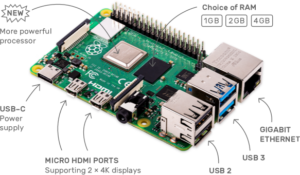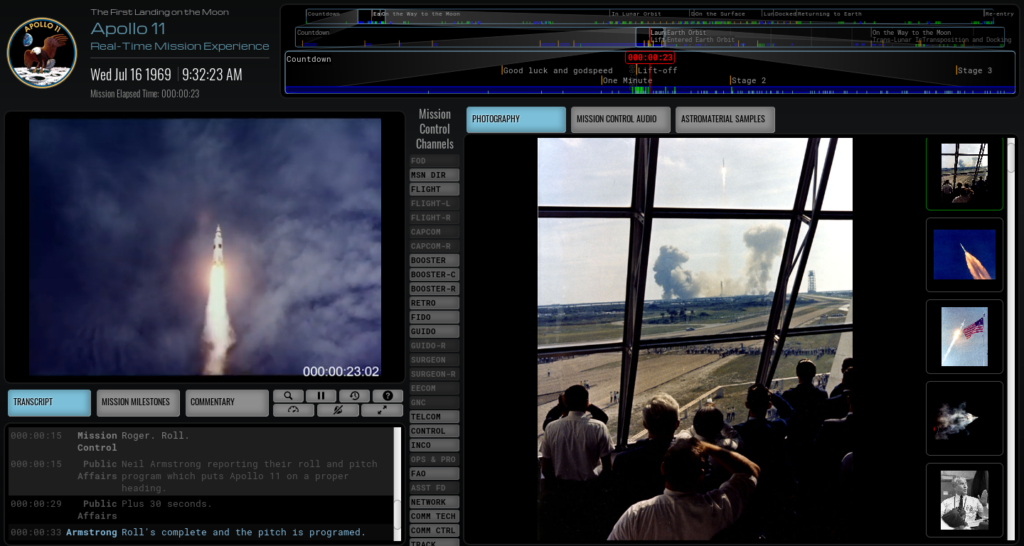One of the responsibilities of the Technical Coordinator in the Ohio Section is to submit something for the Section Journal. The Section Journal covers Amateur Radio related things happening in and around the ARRL Ohio Section. It is published by the Section Manager Scott – N8SY and articles are submitted by cabinet members.
Once my article is published in the Journal, I will also make it available on my site with a link to the published edition.
You can receive the Journal and other Ohio Section news by joining the mailing list Scott has setup. You do not need to be a member of the ARRL, Ohio Section, or even a ham to join the mailing list. Please sign up!
If you are an ARRL member and reside in the Ohio Section, update your mailing preferences to receive Ohio Section news in your inbox. Those residing outside the section will need to use the mailing list link above.
Updating your ARRL profile will deliver news from the section where you reside (if the leadership chooses to use this method).
Go to www.arrl.org and logon.
Click Edit your Profile.
You will be taken to the Edit Your Profile page. On the first tab Edit Info, verify your Email address is correct.
Click the Edit Email Subscriptions tab.
Check the News and information from your Division Director and Section Manager box.
Click Save.
Now without further ado…
Read the full edition at:
THE TECHNICAL COORDINATOR
Jeff Kopcak – TC
k8jtk@arrl.net
The latest addition to the Pi family is here – Raspberry Pi 4. Boasting impressive upgrades, this latest version of the device is becoming a suitable replacement desktop PC or multimedia device. Pi 4 keeps the same form factor and still remains competitive at the $35 starting price.
Device highlights:
- 64-bit quad core processor running at 1.5 GHz with built-in metal heatsink
- 1 GB, 2 GB, or 4 GB RAM configurations
- 2 USB 3.0 ports
- 2 USB 2.0 ports
- Gigabit Ethernet with Power over Ethernet (requires separate PoE HAT)
- 2.4 and 5 GHz Wireless LAN

- 2x micro-HDMI ports supporting 2 – 4K monitors
- Micro-SD card slot for operating system and storage
- 5V DC USB-C power connector
- Standard Pi 40-pin GPIO with 5V DC
Instead of a single memory configuration, a new tiered pricing structure was introduced for the three different RAM configurations:
- 1 GB: $35
- 2 GB: $45
- 4 GB: $55
Even the 4 GB model is very reasonable at $55. The addition of USB 3.0 and Gigabit Ethernet allows for faster network and data transfers. Great for rolling your own network storage or video streaming server.
The form factor remains the same but due to changes in the power and video connectors, existing Pi cases will not fit. The power connector changes from a micro-USB to a USB-C connector. Probably in an effort to alleviate the most common problem using the Pi, finding a quality power supply, the Raspberry Pi Foundation is selling an official USB-C 15W power supply. Micro-HDMI cables or adapters are required to connect a TV or video display.
Noobs/Raspbian remains the official operating system and comes with a push to the next version from Raspbian Stretch to Raspbian Buster. Existing Pi installations can benefit from a hardware upgrade even using the same SD card in a new Pi 4. MAKE SURE you have updated the Raspbian operating system to take advantage of the new chipsets. Existing installations WILL NOT work without an operating system upgrade. Availability in other Raspberry Pi projects not based on the official Raspbian operating system will depend on the project. A Linux Kernel update will likely be required and may come via package manager, manual update, automatic update, or at worst, a re-image of the SD card. Remember to backup first! The HamVoIP AllStar project I wrote about a couple months ago stated a Kernel update is required for Arch Linux and will come via their automated update menu option.
When is the new hotness available? Well, now. Sort of. The Raspberry Pi 4 was released June 28, 2019 but you’re going to have a hard time finding them in stock. The Pi Foundation has a list of official vendors. Checking Newark Element 14, Micro-center, and my favorite place to buy Pi and quality components, Adafruit, were all out of stock. Estimates were 2-3 months before more would be available. Check out this substantial update to this credit card-sized computing device for your next project.
FT4?
HF bands dead lately? Not if you are an FT8 user. This mode has kept the bands active with the lack of solar activity. Unless it’s a contest weekend, I’m seeing little CW activity and less voice. There’s that 3 kHz of FT8 where there is always activity. I think FT8 keeps hams excited about ham radio and operating in general during an otherwise miserable sunspot cycle.
FT8 allows a complete exchange in 1:30, from CQ to 73. High power and high-profile antennas are not a requirement. Low power and “apartment” type antennas work well too. At times, I don’t see any trace on the waterfall of the station I’m working.
The program and protocol are open-source allowing others to build other applications using the protocol. Those include JS8Call which takes the robustness of FT8 and builds a messaging protocol with the ability to relay messages, similar to FSQ.
The good keep getting faster, better, cheaper. On July 16th, version 2.1.0 of WSJT-X was released for general availability and introduced a new mode, FT4. According to Dr. Taylor – K1JT, developer of the WSJT protocols, message types are the same as FT8. Improvements over FT8 include a mode that acts more like RTTY, meaning no more fighting to keep your computer clock synced with UTC and no designated transmit times. Transmission duration is 4.48s vs 12.64s of FT8. Bandwidth is 90 Hz. A compromise for quickness is the ability to dig out weak signals. FT8 is limited to around -21dB, FT4 is about -16dB. For reference, an excellent CW operator who can pull out weak signals is -15dB (figures from the video). Update now to start experimenting with the new exciting addition to the WSJT family!
Groups.io
A service for collaboration I’ve been using lately is Groups.io. Joined during my recent trip to D.C. because a mesh group was using it for collaboration. I quickly noticed other ham projects I was interested in were using it too, like the East Coast Reflector and NW Digital Radio. It’s a service similar to Yahoo and Google Groups but so much better. Groups.io doesn’t serve ads, track users, and has a better reputation than Facebook, which I neither use nor trust. Featuring a modern platform for communities to connect through messaging, calendar, chat, polls, database, photos, wiki, and integration with a list of other platforms. Great for projects to post documentation and offer support or a platform to keep in-touch with club members. It will even move your Yahoo or Google Group over to Groups.io. It’s a freemium service. Most will find the free offering more than adequate. The $10/month level adds the ability to directly manage memberships and take donations.
IC-7300 Clock Sync Video
Have an ICOM IC-7300? Want to keep the radio’s clock in sync with a PC while learning Linux and Python programming in the process? Check out the tutorial video by Kevin – KB9RLW, the “old tech guy.” He talks about why he wants to keep the clock synced and explains the program he wrote. His script is heavily commented which helps to understand the commands and he explains each part in the video. The script is available on GitHub which means it’s easily to build upon. I really like Python and started to use it when I was still doing programming. Alot of Linux programs are written using Python meaning it has to be a powerful language. Depending which survey, it’s #1 or in the top 3 most popular programming languages used today.
SDR Concepts
Onno – VK6FLAB produces a podcast called Foundations of Amateur Radio. Unlike others, each episode averages 5 minutes. They are short, very concise, and does an excellent job of explaining topics efficiently. Since April, episodes have been focused on Software Defined Radios (SDR). A must listen if you picked up an SDR-based radio at Dayton this year and want to learn more. Covering terminology like Direct Conversion and Sample Rate, even comparing SDR to ones with transistors or valves.
Apollo 11 50th Anniversary
When this article goes to press, we’re in the middle of the Apollo 11 mission 50th anniversary first landing on the moon. I’m already out there working those on the air special event stations. Many are operating until July 24, only have a couple more days! Check the Special Event Station listing or the DX Spotting networks.
Steve – W8HF sent me a website that is amazingly cool beyond words. When someone asks to define sites that make the Internet, this should rank near the top. Called Apollo 11 in Real-time, it is “a real-time journey through the first landing on the Moon” and is “entirely of original historical mission material.” When you visit the site, you can select to visit the launch 1-minute prior or visit the mission in real-time, 50 years ago. Included in the real-time elements are mission control footage, TV transmissions, 2,000 photographs, 11,000 hours of Mission Control audio and discussions, 240 hours of space-to-ground audio. All synced and organized chronologically. Truly an awesome website and I hope they keep it online for a long time.
Thanks for reading and 73… de Jeff – K8JTK

